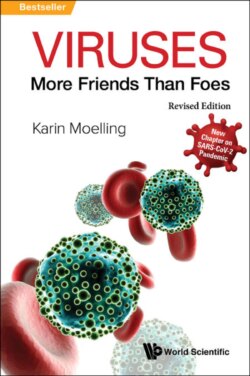Читать книгу Viruses: More Friends Than Foes (Revised Edition) - Karin Moelling - Страница 22
На сайте Литреса книга снята с продажи.
Herd immunization
ОглавлениеAn internationally accepted measure against the spreading of CoV-2 is isolation of people, social distancing. A disadvantage of this is that it results in a low rate of infection of the population and lack of healthy recovered antibody carriers. They are important to keep the reproduction number R0 below one. Then each person infects fewer than one new person. There are calculations that about 66% of the population needs to have antibodies to bring the epidemic to a halt (based on an assumption that R0 equals 3).
Another risk is that the virus only “hides” and comes back when measures are relaxed. With no vaccine available as yet, the way to increase immunization is the old-fashioned virological procedure called herd immunization. This is often misinterpreted: It is not a prescribed procedure, it just happens, preferentially among younger people who do not become as sick as the elderly. This may also be the only way in which tropical or low-income countries with areas of high population density can cope with the pandemic — or in refugee camps, where many people are young. There may, however, be other risk factors for young persons, such as tuberculosis, HIV, diabetes, or pollution effects. However, without western-style medical help and hygiene, this may be the only possible response. It may work out better than we fear. This approach is being taken by Sweden — where, however, the population density is very low, and Swedes were instructed to keep at a distance from one another. Boris Johnson intended to adopt this approach in the UK, but was attacked and he took it back. From theoretical calculations such a procedure would result in a high peak of infections but a lower chance of a second or third peak. But the number of deaths may be up to twice as high, as shown in previous studies with influenza.
A politician has to decide between two extremes: save as many lives as possible, as is done in Europe, or keep the economy up — an option first tried by President Trump in the USA. However, when he was told by his medical adviser Toni Fauci from the National Institute of Allergy and Infectious Diseases, that his approach might cost a million deaths, he modified it. Decisions on how to cope with the pandemic range somewhere between these two extreme options.
We do not know, whether the social distancing in many European countries prevented a herd immunization among the less endangered middle-aged population. The exit strategies may take over.
